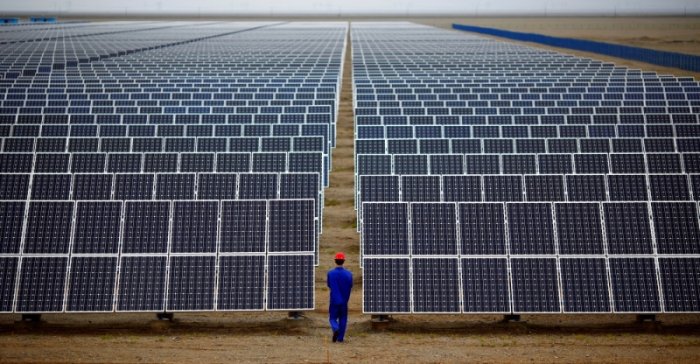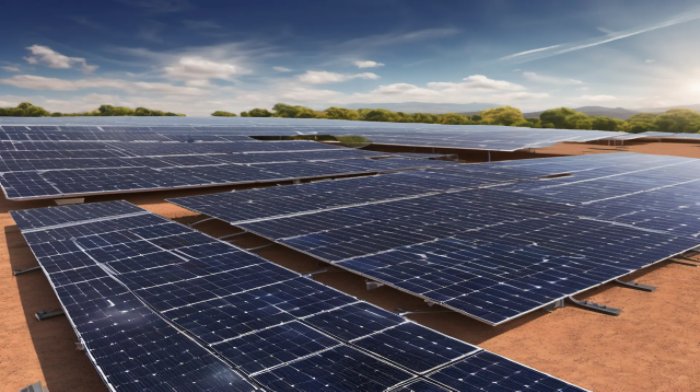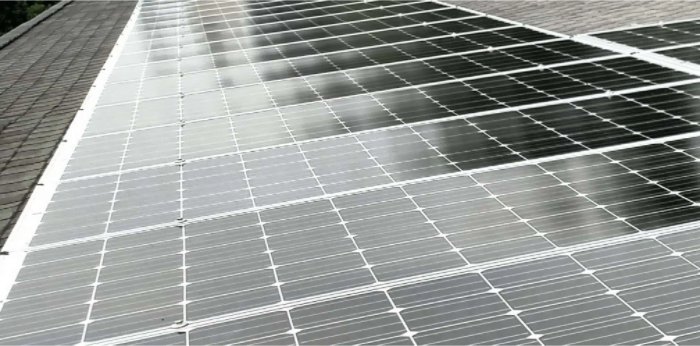Enhance solar efficiency with optimal orientation, quality panels, regular cleaning, shade analysis, efficient wiring, and smart monitoring.
Photovoltaic Panel Tilt Angle
A solar panel is one of the key components of a renewable energy system, as it turns sunlight into electricity. Arguably the most critical aspect of solar panels is their angle of tilt. The concept is reasonably clear: if the tilt of the screen is perfect, it will be perfectly perpendicular to the radial light emitting from the sun, thereby increasing the amount of power produced from the same amount of light. The best tilt angle is significant as it determines what degree the panels will tilt toward the sun, thereby optimizing the power-containing sunlight hitting it throughout the day. As such, the points examined in the analysis are factors influencing optimal tilt angle for the solar panels and methods for determine the optimal tilt angle.
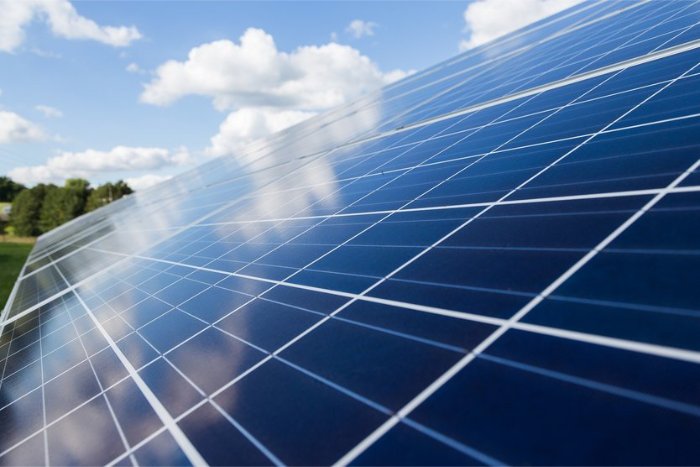
Factors Influencing Optimal Tilt Angles
The optimal tilt angle for the photovoltaic panel is influenced by such factors as geographical location, seasonality, system efficiency, and shading analysis.
Geographical Location – Tropical locations benefit from the low tilt angles while the high location may need a high angle to compensate for the sun’s lack of elevation. Seasonality – solar panels should be tilted back starting the winter, and this is more pronounced for the areas in the northern hemisphere. System efficiency and shading analysis also determine optimal tilt angle and this is related to the fact that shadows that fall on them such as a building in close proximity will lower the amount of power produced by some of the panels.
Methods for Determining Angle of Tilt
The first approach would be to rely on the available analytical calculations and online tools that provide this sort of information at their fingertips. The other option would be the empirical test, as in most practical endeavors, will prove to be the most reliable option and should be put into place first. The other option is to get a reliable shading analysis done, and once the efficiency of the system is known, it is possible to tip back as per the minimal shading throughout the day.
Conclusion
The optimal tilt angle for the solar panel will be an essential aspect that ensures maximum power production. Factors to be considered when finding this optimal angle of tilt for the solar panel screen solar panel and what ensures that this tilt maximizes power coming from the sun. These factors have included the geographical location of the site, why at summer and winter timing it is essential to lay the panels back, the shading analysis done, and getting to know the system efficiency. The methods for determining optimal tilt angles include looking at the analytical calculations and online tools and the empirical test.
Component Quality and Power Generation Efficiency
One effective way to improve the efficiency of a solar energy system would be to invest in high-quality solar panels. Typically, high-quality panels are built with monocrystalline or polycrystalline silicon cells, which provide longevity and better performance. The efficiency of such panels ranges from 15% to 22%; thus, they produce more electricity. Investing in high-quality solar panels also enables homeowners to expand their systems as needed.
MPPT Technology
Another solution to this problem is to introduce Maximum Power Point Tracking to the solar power system. The technology helps the solar power system to work at its full efficiency. MPPT controllers balance the energy flow so that it runs the voltage and current at which the solar panels produce the maximum output. As a result, the power generated with the use of this technology overpasses the generation without MPPT by 30%.
Regular Maintenance and Cleaning
The efficiency of solar panels also highly depends on regular cleaning. The solar panels collect dust, dirt, and debris which decrease their ability to absorb sunlight. As an option for cleaning, homeowners can use water and non-abrasive cloth. In such a way, they will be able to significantly boost the efficiency of their energy production by around 5%-10%.
Optimal Panel Orientation and Solar Plate Tilt Angle
Another way to enhance the efficiency of a solar energy system is to correctly position the solar panels to obtain maximal sunlight exposure. In the case with the Northern hemisphere, it is better to locate plates to face south. Solar panel tilt plays a critical role in energy conversion which can also be adjusted according to the latitude. Studies show that such proper positioning can improve the efficiency of a solar energy system by 20%.
Efficient Inverter
An inverter is vital for converting DC electricity produced by solar panels to an AC one, which is used in most of the electric household appliances. There are several types of inverters suitable for the solar power system, such as string and microinverters, and power optimizers. The main guideline for a high-quality inverter is the conversion losses; the less efficient ones result in more energy wastage in the process of conversion. Optimal inverter can boost the efficiency of the system by 5% to 10%.
Integration with Energy Storage Solutions
Finally, homeowners can link lithium-ion batteries with their solar power system. The energy storage ensures better energy utilization and allows homeowners to use the electricity when there is no sunlight or during night time. The batteries are being charged during the peak hours of sunlight access and store enough energy for the whole night. The energy storage decreases reliance on the grid and can even boost self-consumption by as much as 85% of the energy production. As an average addition to the efficiency, it can result in 15%.
Continuous Monitoring and Performance Analysis
To ensure that the system runs properly, homeowners can also add monitoring and analysis solutions. Several monitoring applications and software allow them to keep the energy production and consumption under control. Being essential for timely problem identification, they can save around 5%-10% of the energy being used.

The Impact of Dust on Solar Energy System Efficiency
Dust accumulation:
The dust that accumulates on the surface of the solar panels can significantly reduce the efficiency at which they can be operative. Therefore, it is essential to clean up the panels as often as possible. Studies have shown that cleanin the panels as often as every six months can increase the electricity produced by 16% .
Advanced coating technology:
It is possible to invest on advanced coating technology which will help to minimize the impact of such dust on solar panels. Stay-blue coatings and hydrophobic coatings reduce the soiling, and dust heights enable the solar panel to efficiently clean themselves up. Dust can accumulate on the panels for many years without affecting the performance if the panels have hydrophobic coatings; it means that up to ninety per cent of the efficiency can be maintained. .
Automated cleaning systems:
Forgetting to clean the solar panels can affect the overall performance . Installing automated system will facilitate the continuous cleaning of the solar panels through the use of a brush, a wiper or jet of water. A solar panel that is cleaned using an automated system increases the energy that is generated by 20%-25% .
Dust monitoring sensors:
It is possible to monitor if there is any dust on the surface of the solar panel by installing dust monitoring sensors . This makes it possible to remove the dust whenever it reaches a certain level. The overall performance of solar panels that are fitted with these sensors increases by 12%. .
Location and orientation:
One can install the solar panels in areas where there is little dust, for instance, in urban areas where there is minimal pollution, and therefore dust. If there are no such options, the solar energy system can be installed at an optimal tilt so that the solar panel can easily clean itself when the rain falls.
Solutions within the capacity of solar energy system owners
Vegetation management: controlling vegetation around solar panel installations can prevent dust accumulation from organic matter, pollen, and other debris. Regular trimming of nearby trees and bushes can minimize shade and obstruction of airflow, reducing the buildup of dust on panels. According to one study, effective vegetation management can improve energy production by up to 8%
Regular inspection and maintenance: conducting regular inspections and checks to ensure that the solar panels are in working order and clean is vital for identifying dust-related issues early. Prompt maintenance, such as repairing damaged panels, replacing faulty components, or cleaning dust off, can help prevent the reduction of system efficiency. Research suggests that regular cleaning can stop the losses of production capacity that might reach 5% .
Public awareness and education: initiating public awareness campaigns and educating the consumer base about the detrimental effects of dust on solar energy can prompt responsible ownership and maintenance. A well-informed population will understand the importance of cleaning. One study has shown that customers who are knowledgeable about the problem are more likely to invest in effective cleaning technologies, decreasing efficiency losses .
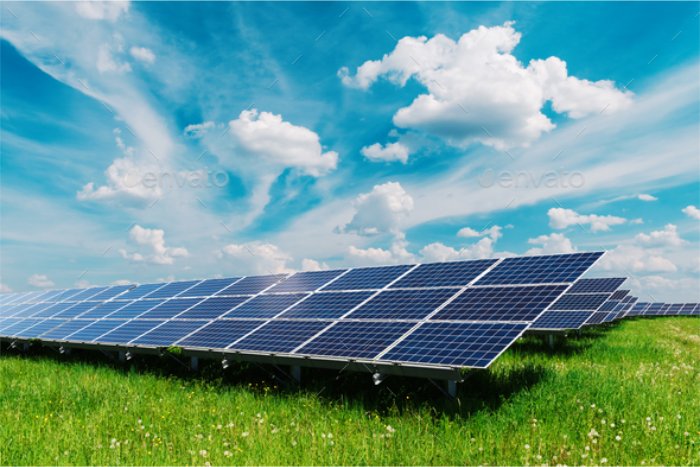
Shadows and Object Occlusion
Optimal Panel Placement:
- Proper placement of solar panels is crucial to minimize the effect of shadows and object occlusion. Solar panels should be fitted in places where they are not overshadowed throughout the whole day and ideally, throughout the year as well. Research claims that even a mere 9% shading of an entire photovoltaic area could lead to a 54% drop in output supply.
- Advanced Shading Analysis: advanced shading analysis can be applied using software tools in order to avoid the potential occurrence of shading problems when fitting solar panels. It is undertaken using 3D solar modeling and simulation techniques and predicts shading patters at different times of the day and year. Shading analysis helps in minimizing shadow patterns and prevents panels from casting shadows on each other. Research shows that using shading analysis software provides an improvement of up to 8% in energy yield compared to the manual placement of the panels.
- Microinverters and Optimizers: microinverters or power optimizers with panel-level MPPT tracks can be used to prevent the effect of shadows on solar frameworks. In contrast to traditional string inverters, shading of just one solar panel will reduce the efficiency of the whole string because of the curtailed string current. When using microinverters or optimizers, each panel operates independently of the other and delivers maximum output supply. Shading of one solar panel does not affect the efficiency of the other and this diminishes the whole effect of shading.
Trimming Trees and Vegetation:
- Valuable output supply can be lost as a result of shadows cast by trees, branches, or other vegetation on solar panels and the panels themselves causing object occlusion. Research shows that up to 12% in energy yield can be lost as a result of shadows and object occlusion.
- Tilt and Orientation Adjustment: the optimal tilt of a solar panel should be the angle at which maximum sunlight exposure throughout the year can be received. It appears that the suitable tilt angle of a solar panel should be equal to the latitude of the place. Further, the orientation of maximum exposure to the sun on the entire planet is south in the northern hemisphere and north in the southern hemisphere. It results that for the northern hemisphere, it is more convenient to orient solar panels towards true south. The orientation adjustment should be made in order to ensure that both tilt and orientation can maximize sunlight exposure. Research shows that with proper tilt and orientation systems, shading losses can go up by up to 10%.
Reducing Line Losses
The most effective methods of reducing line losses include the employment of optimized transmission infrastructure, efficient inverter technology, voltage regulation and power factor correction, distributed energy storage, dynamic line rating systems, load balancing and grid optimization, and predictive maintenance. All of these methods are based on the principles of improved energy transmission with minimized energy losses to heat.
Optimised Transmission Infrastructure
Line losses can be reduced by investing in modern transmission infrastructure. Installing high-voltage transmission lines and superconducting cables can help transmit energy with minimal resistive losses. According to the literature, major cost-effective upgrades can reduce line losses by up to 30% from conventional systems .
Efficient Inverter Technology
Deploying high-efficiency inverters can be used to reduce line losses in solar energy systems. Modern inverter technologies feature low harmonic distortion and maximum power point tracking and provide increased energy conversion efficiency, thus minimizing line losses. According to research, high-efficiency inverters can be employed to reduce line losses by 15% compared to older technologies .
Voltage Regulation and Power Factor Correction
Voltage regulation and power factor correction can be used to transmit power with minimal line losses. Voltage regulation adjusts the voltage levels of the electricity that is transmitted, thus reducing resistive losses along the line. Power factor correction reduces reactive power losses incurred during the transmission. The literature suggests that these two measures combined can reduce line losses by 20% .
Distributed Energy Storage
Line losses can be reduced by deploying distributed energy storage systems along the transmission lines, which will reduce voltage fluctuations and balance power flow. The energy storage systems collect excess electricity during the times of low demand and supply it to the population during peak demands, reducing the resistive losses. It is suggested that using distributed energy storage can reduce line losses by 10% .
Dynamic Line Rating Systems
Line losses can be reduced by improving the efficiency of transmission lines and their capacities. The dynamic line rating system uses real-time weather data and temperature sensors to adjust the allowable current capacity depending on temperature. The literature suggests that the resistive losses can be minimized through these adjustments, up to 12% during peak demand periods .
Load Balancing and Grid Optimization
Line losses can effectively be reduced through load balancing and grid optimization. Load balancing means distributing the electricity across the grid more efficiently, and grid optimization can include various technologies that ensure the grid is not overloaded. Advanced grid technologies can include smart grid devices, digital monitoring and communications, and demand response programs. The literature suggests that through these technologies, line losses can be reduced by 25% .
Predictive Maintenance
By using data and condition monitoring technologies, transmission line operators can predict possible issues and repair the transmission equipment before they can cause greater line losses. This method is based on similar condition monitoring scenarios, such as vibration monitoring of equipment. According to research, predictive maintenance can reduce line losses by 8% from optimising the maintenance schedule.




